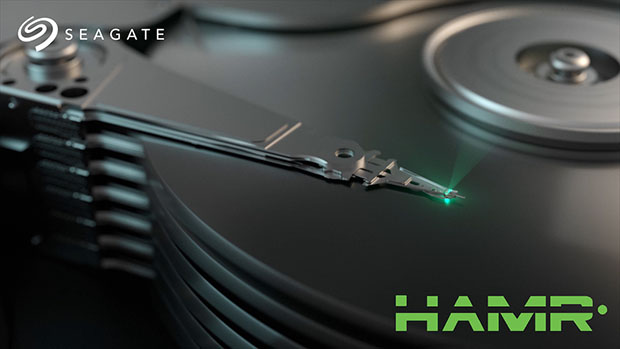Seagate Will Swing Mighty HAMR Tech To Pound Out 100TB HDDs By 2025
Consumers have never had more choices if they need to purchase storage, whether it's hard drives, flash drives, solid-state drives, or even cloud or network-attached storage. Save for a couple of blips, prices have steadily creeped downward and today you can score a 10TB hard drive for only $300, or a measly $0.03 per gigabyte. For many users, that's plenty of space -- more than enough to store their movies, photos, music, and documents. For others, though, 10TB just won't cut it. For those users, thankfully, it's almost HAMR time...

With "heat-assisted magnetic recording", or HAMR, Seagate will use heat to increase density much further than they can be with traditional PMR (perpendicular magnetic recording), which thus increases the overall areal density and storage capacity. Heat is used to make target areas of the drive more receptive to magnetic effects, and allows smaller areas to be written to, which is increasingly more important as areal density continues to climb.
Some competitors, like Western Digital, hope to achieve similar increases in density using different methods, such as MAMR, or microwave-assisted magnetic recording. With HAMR, Seagate expects to begin shipping its first drives in 2020, and at this point, it looks like those first drives could be 20TB in capacity. The company, however, expects much larger increases in capacity down the line.

In the 2022 time frame, 36TB hard drives could become a reality, while in 2023 or 2024, Seagate expects 48TB drives could be the norm.
If true, that level of progression would be quite stark, because it will have take roughly four years (between 2016-2020) to increase density from 10TB to 20TB, but with HAMR Seagate expects to jump from 16TB in 2019 to 48TB in 2023-2024. That would be a much larger progression in a similar amount of time, and could lead to 100TB drives by 2025 if all goes according to plan.

